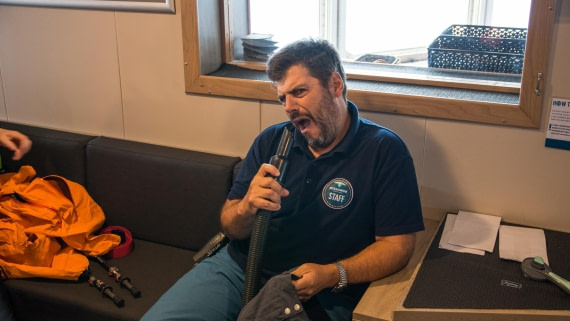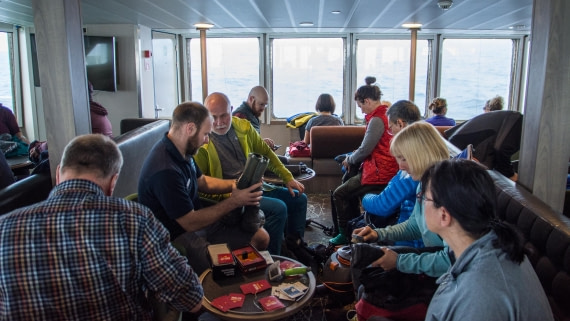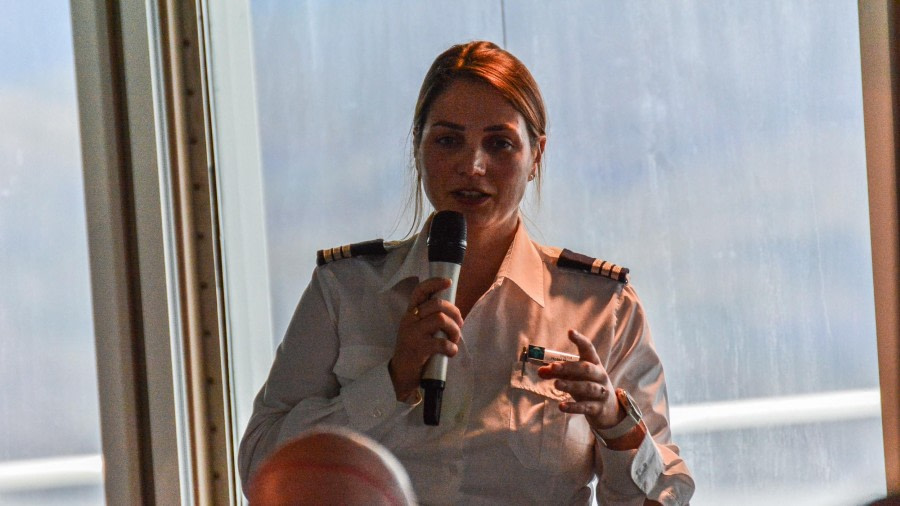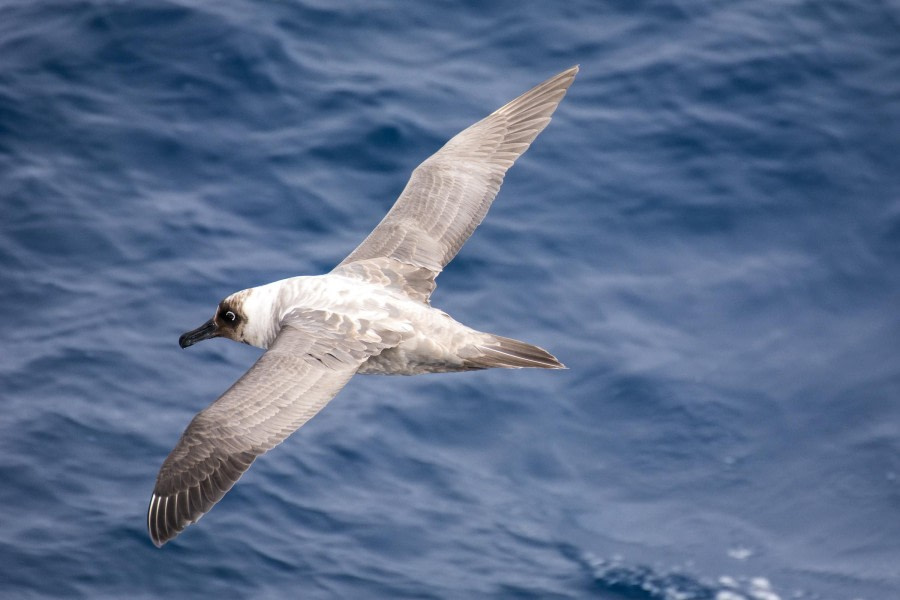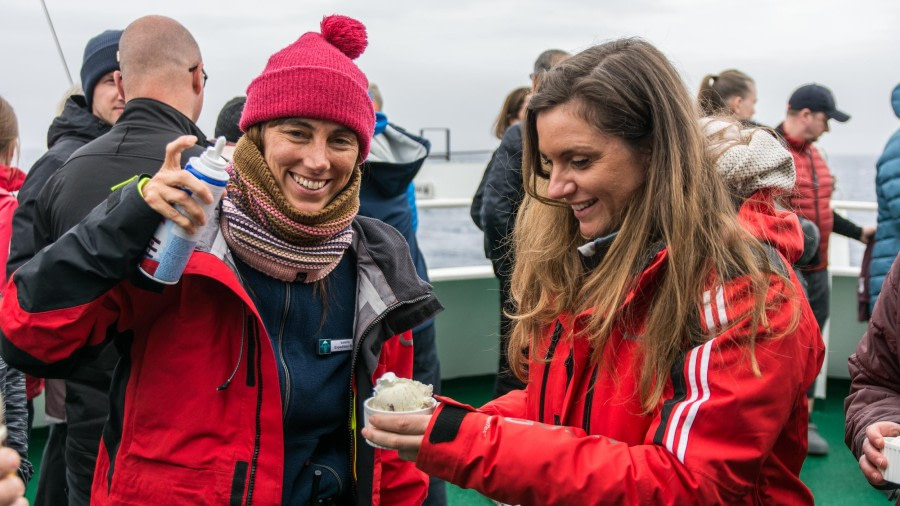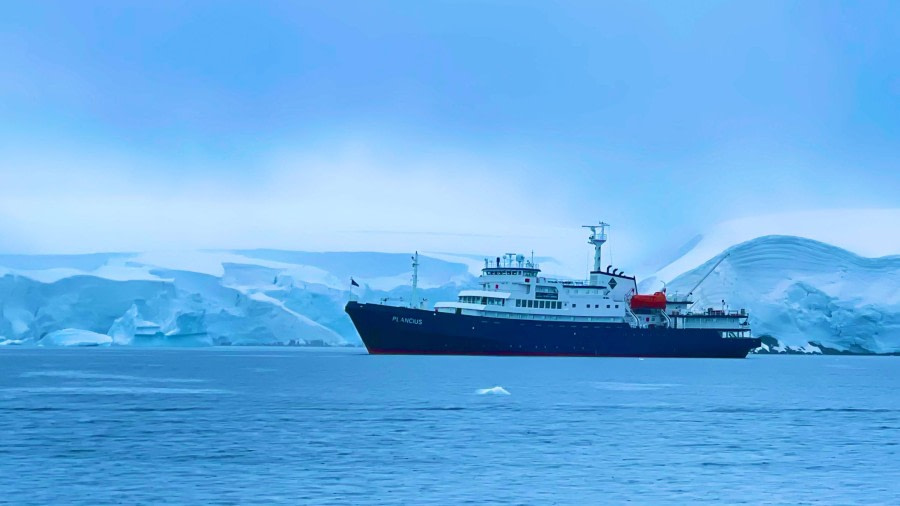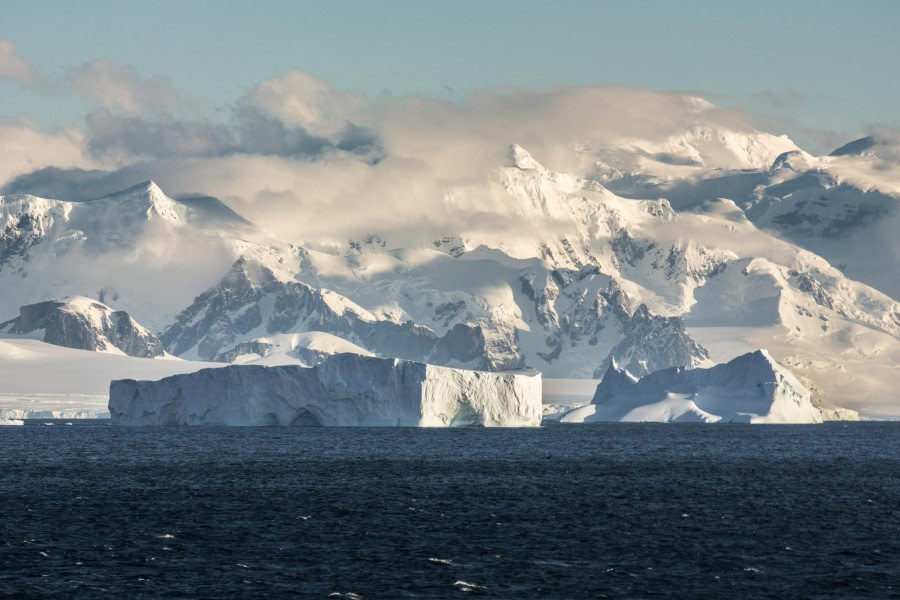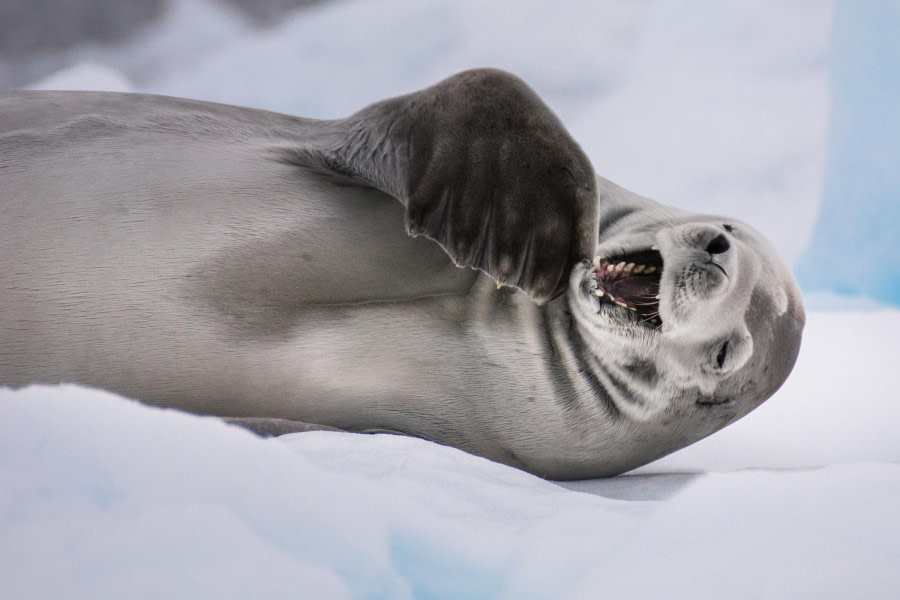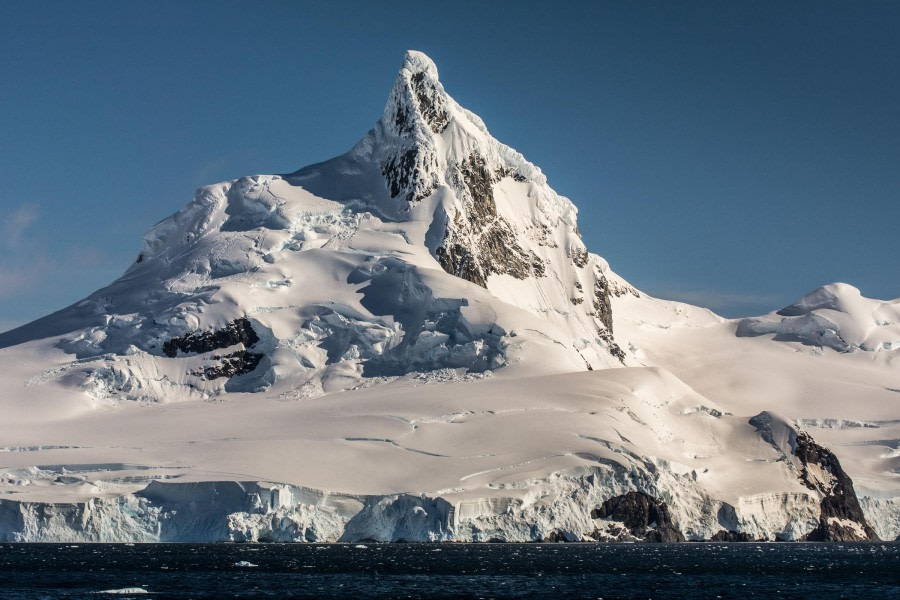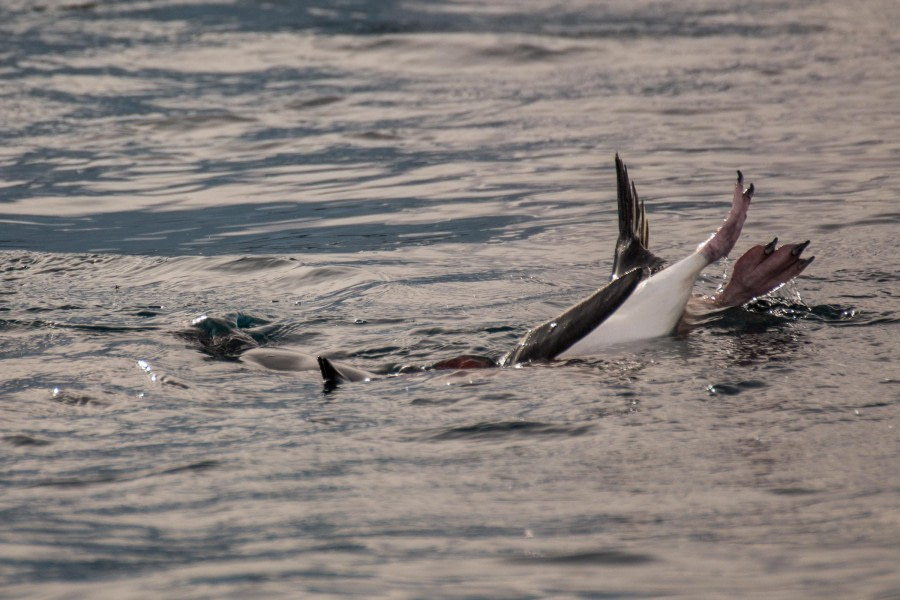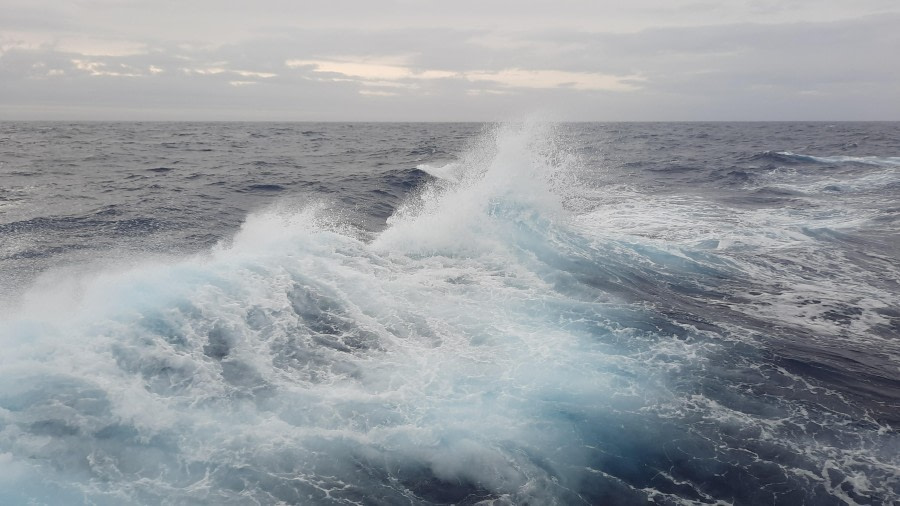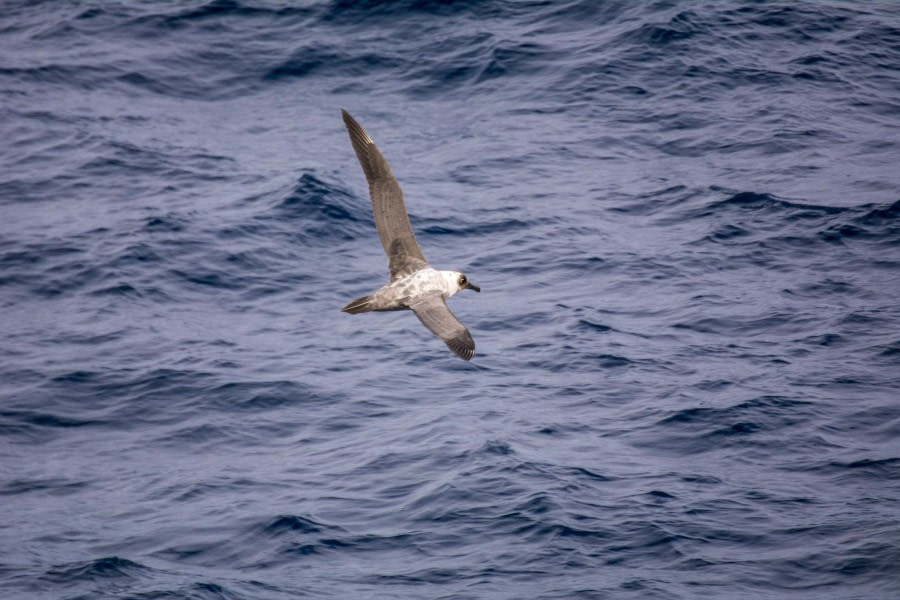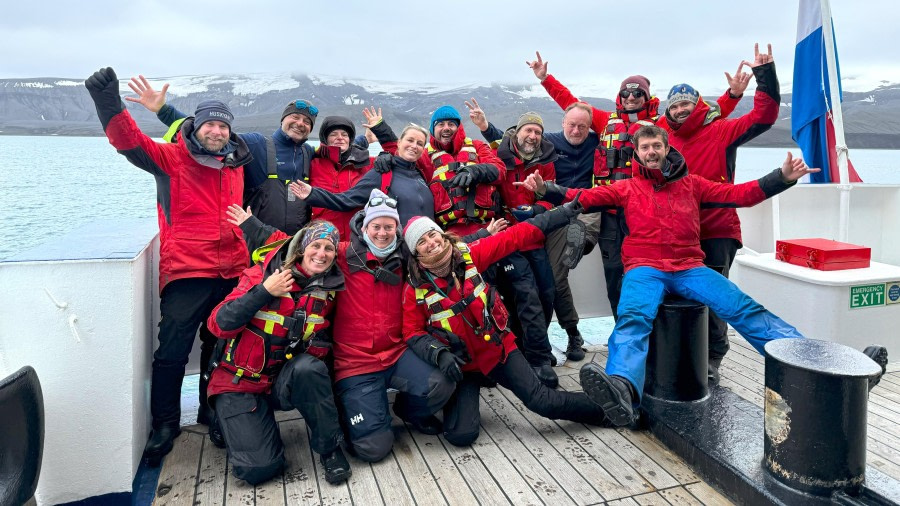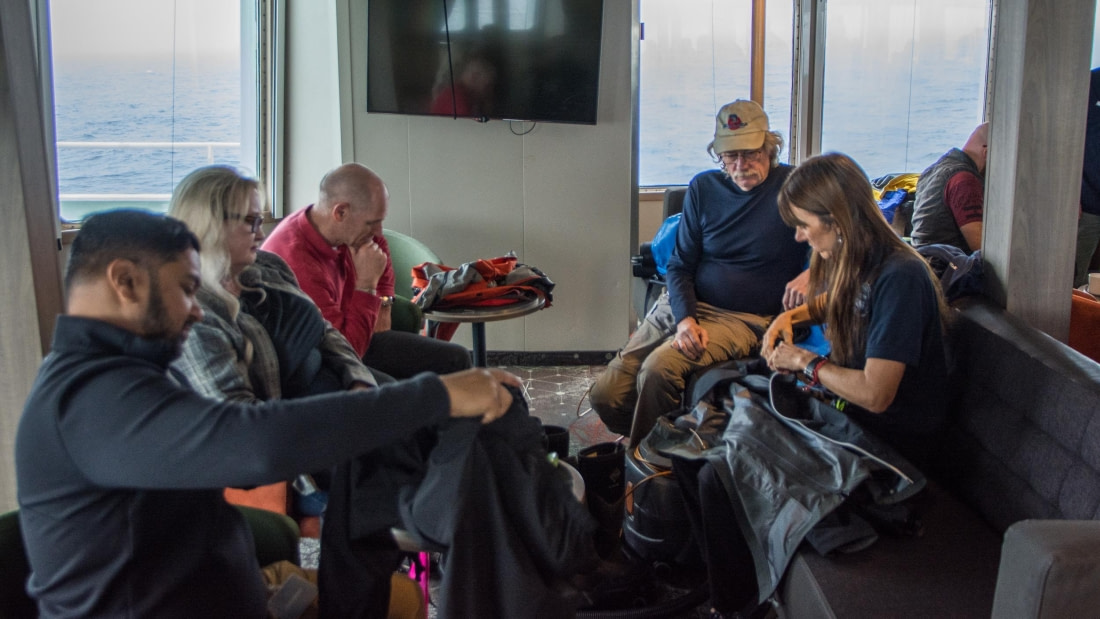| Datum: | 25.02.2024 |
| Position: | 54° 55.6’S / 67° 25.4’W |
| Wind: | W-4 |
| Wetter: | Overcast |
| Lufttemperatur: | +11 |
Eventually our departure day to the Antarctic Peninsula had arrived and a bit earlier than 16:00 we were queuing in front of the gangway that would lead us to the Little Blue Ship. Amongst the other giants that were moored in the port of Ushuaia, it looked like a Cinderella with her blue and white coloration. Perhaps not majestic but surely a very reliable and sturdy ship to explore the Polar regions.
At the top of the gangway we were greeted by the enthusiastic members of the expedition team, and the hotel manager quickly checked us in. There was not a lot of time to relax as at 17:30 a mandatory safety drill was scheduled so our presence in the lounge was required. We were first welcomed by expedition leader Claudio and then the chief officer Romanas guided us through a safety video and the drill procedure. Before we knew it, we all sat in the lounge wearing our big and bulky orange life vests and when we heard the abandon ship alarm we all made our way outside to the life boats where the second officer, Don, informed us further. With the ship freed of the mooring lines, we left the city at the end of the world behind our stern and started our long journey South. Captain Ernesto came down to the lounge where he greeted us with a glass of Italian Prosecco, while speaking some warm welcome words. Claudio followed with more information about the program and the planning for the days ahead.
Soon it was time for dinner. The galley team had prepared a delicious buffet and the dining room was buzzing with excitement. As the evening creeped in we plied our route to the Eastern section of the Beagle channel, eventually getting into the open waters of the Drake passage.
The fun had just begun!!


